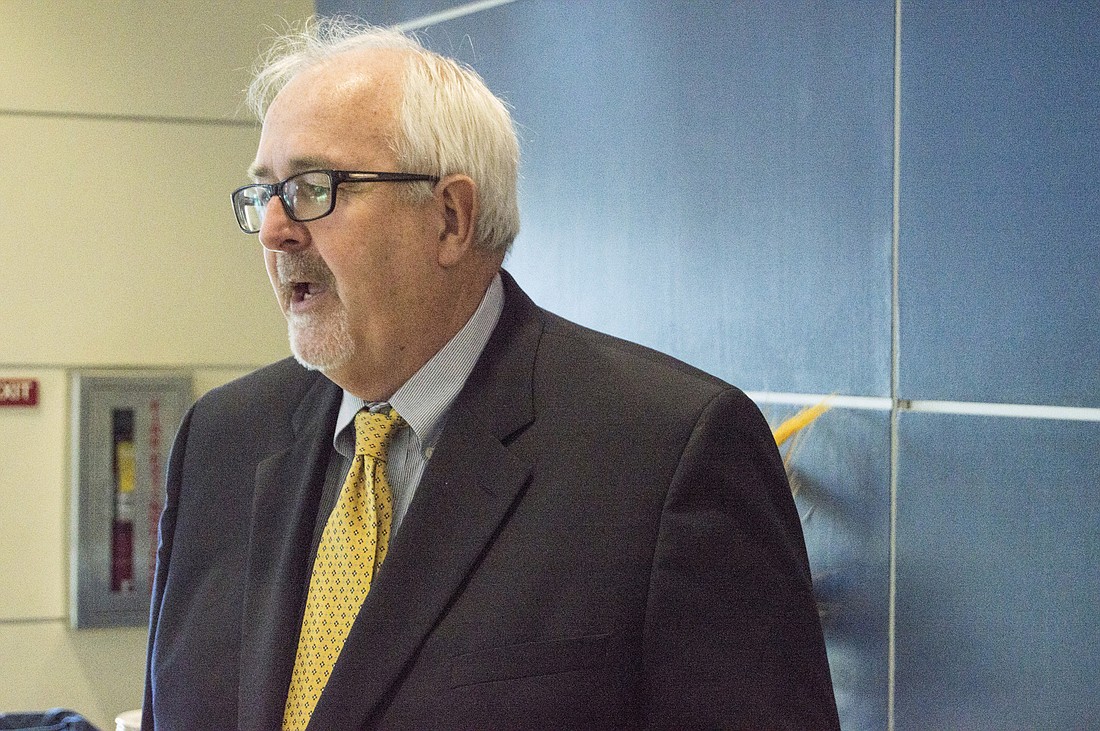- April 29, 2024
-
-
Loading

Loading

With 16 weeks before the start of hurricane season, local officials on Feb. 9 heard from emergency management experts how to improve operations in case another storm comes for the area.
An after-action review about how the county dealt with Hurricane Irma before, during and after the storm was overseen by Craig Fugate, former head of the Federal Emergency Management Agency and Florida's former top emergency management chief.
Together with three other peer-reviewers, everything from the county’s evacuations to its social media plans were addressed, and they came up with a few specific topics — many of which revolved around simplifying and enhancing communication during an emergency.
“Hope is not a strategy,” Fugate repeated several times.
First, the group recommended the county open all shelters at once, earlier than was done last summer, and that each be handicap-accessible and pet-friendly.
During Hurricane Irma, the county opened shelters in waves based on need, and had specific ones designated for people with pets and evacuees with special needs, like those who were oxygen-dependent and needed electricity. And while the county had a long list of shelters, many of which may have been closer to where evacuees lived, only a few were opened at a time.
“Families should be able to go to the closest shelters,” Fugate said.
Although some officials raised concern about the costs of opening, running and staffing shelters, Fugate insisted it’s easier to shut down an unneeded shelter than open one in an emergency situation.
Further, the former FEMA director encouraged officials to stop referencing evacuation zones by letters (i.e. Zone A, which was the barrier islands and coastal regions), and instead use landmarks and geographic boundaries to describe them.
“Just tell me the areas we’re evacuating,” he said. “Simplify for the public — take the approach that this may be their first hurricane, and they are clueless.”
Along the same lines, returning home after the storm was an issue after the worst of the storm passed. The county didn’t issue the “all-clear” for days after the storm, but people were out on roads and back home within hours of the worst weather moving out.
Fugate recommends using a color-coded system to let people know how safe different areas are to return to, rather than waiting for the entire county to be safe and relatively back to normal.
Green means the roads are open and things are relatively safe. Yellow means some roads may be washed out and there may be infrastructure damage, but emergency officials should be able to get there to help if needed. Red zones are not safe, and to return would mean help may not be able to reach you.
“Give them information on what areas are safe, what areas need caution and what areas aren’t safe.”
Other recommendations from Fugate and the peer reviewers were to pre-identify and train shelter teams — groups of people who are assigned in advance to operate a certain shelter, and know that’s where they would be needed in an emergency. They encouraged the county to be better about communicating with employees their roles, and emphasized that all employees are essential in an emergency. And they mentioned the necessity of getting Florida Power and Light workers, or at least others with some technical training, on the tactical first-in teams that worked to clear debris and other obstacles from the roads as soon as the storm conditions wore down.
Sarasota County Emergency Services Director Rich Collins said while the review is still not finalized, he and his staff have taken in everything that’s been said and are working to put new solutions in place for the 2018 hurricane season — importantly, establishing a transportation plan to get residents in the south parts of the county to the shelters, many of which that can withstand a hurricane are further north.
The after-action review was funded by the Charles and Margery Barancik Foundation and the Gulf Coast Community Foundation, which donated the $20,000 to bring Fugate to the county. Another $26,000 for emergency response educators and consultants was paid with state emergency management grant funding to the county.
At the Feb. 9 meeting, city and county officials had a chance to offer their input, which will be incorporated into the final report, to be presented to the county on Mar. 14.